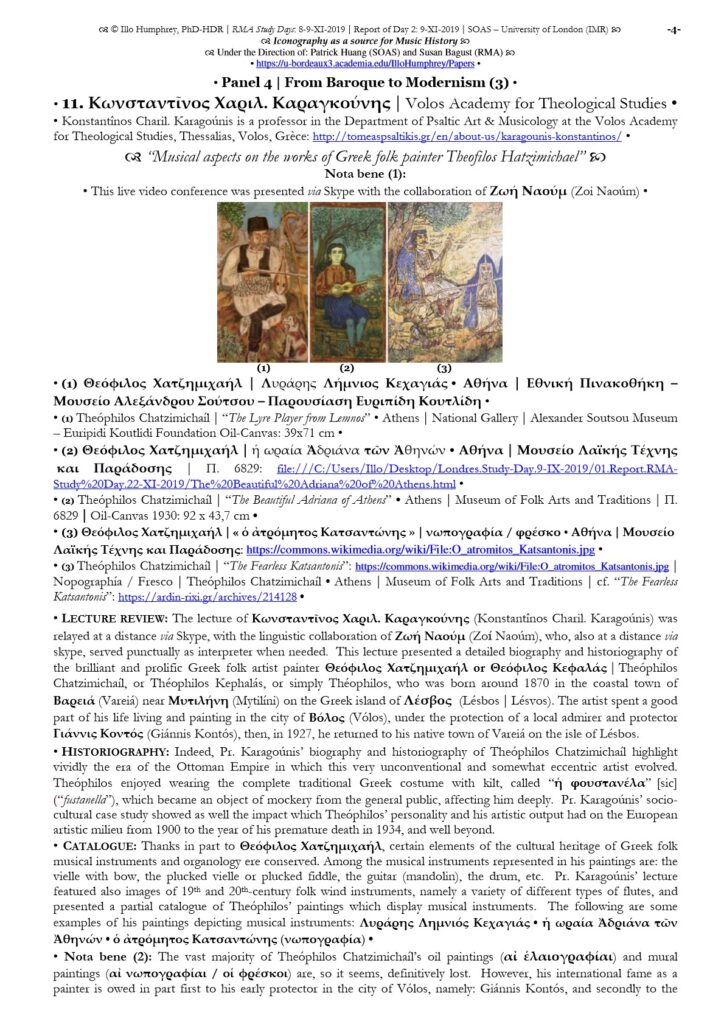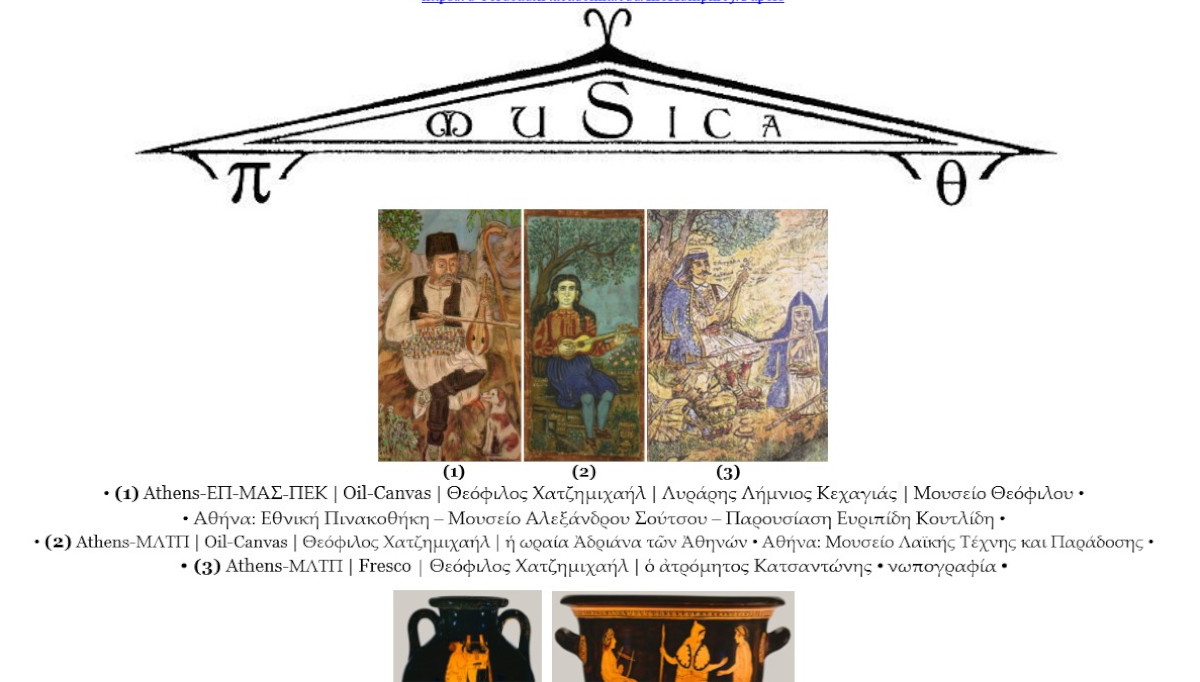Συνέδριο : The Royal Music Association Research Study Days – 2019, entitled Iconography as a source for Music History, were organised by Patrick Huang (SOAS) and Susan Bagust (RMA) at the School of Oriental and African Studies [SOAS], University of London. These Study Days explored what one may legitimately call iconographic proto-philolo- gy – that is to say, a composite approach and methodology, allowing one to determine and to identify by critical deduction the invisible ties between the intangible and tan- gible elements of a given research, and thereby to formulate well-founded hypotheses, and to arrive at sound conclusions concerning studies in Iconographia.
Θεματική : “Iconography as a source for Music History”
Διοργάνωση : University of London (IMR) – The School of Oriental and African Studies [SOAS]
Τόπος, Χρόνος : Λονδίνο, 09.11.2019(Διαδικτυακὴ Συμμετοχή)
Ἀνακοίνωση : “Musical aspects on the works of Greek folk painter Theofilos Hatzimichael”
Περίληψη : Theophilos Hatzimichael or Theophilos Kefalas, born c. in 1870 in the small village Vareia of the Greek island Lesvos, known simply as Theophilos, was a major folk painter of modern Greek art. The main subject of his works are Greek characters and the illustration of Greek traditional folklife and history. His father, Gabriil Kefalas, was a shoemaker, while his mother Pinelopi Hatzimichael was a daughter of an iconographer. When he was very young, he was mediocre at school, but he had a special interest in painting, having learned the basics from his grand-father. His life was very hard, partially because people made fun of him since he often wore the traditional Greek kilt, the Fustanella, in public.
At the age of 18 he abandoned his home and family and worked as a gate-keeper at the Greek consulate in Smyrna, where he stayed for a few years before he settled in the city of Volos in about 1897, searching for occasional work and painting in houses and shops of the area. Many of his murals exist today. Most of his years he spent in the village Ano-Volos, which the birth-city of the author of this paper. His protector during that period was the landholder Giannis Kontos, for whom he did many works. Today the house of Kontos in Ano-Volos is the “Theophilos Museum”.
Theophilos died in Vareia of Greek island Lesvos in March the 24th of the year 1934.
The work of Greek folk painter Theophilos, apart from its artistic and aesthetic value, is a source of information for a number of scientific fields, among which Musicology and Cho-reography are undoubtedly included, along with the individual areas of Ethnomusicology, Musical Ethnography and Anthropology, Popular Instrumentation, Historical Musicology, as well as Folk Costume Making. Theophilos’s works of art, where musical and musical-dancing rituals of the everyday life of Greeks (but not exclusively) are illustrated, are so numerous and sufficient, that each one of the prementioned scientific fields may have a large tank to extract information from, in order to formulate specific studies and thesis, or create extensive education programmes.
With a superficial first glance at the work of Theophilos, one may form the impression that the folk artist simply imprints musical-dancing scenes. Nevertheless, a more thorough observa-tion will confirm the fact that every single scene of his paintings is thoroughly studied and based on deep knowledge of the musical instruments, folk dances and rituals.
Ἐξεδόθη : Ἐκτενὴς Παρουσίαση τῆς Ἀνακοινώσεώς μου δημοσιεύθηκε (2020) στὸ Ἠλεκτρονικὸ Πε-ριοδικό Musica: Illo Humphrey, PhD-HDR | Report: RMA Study Days | 9-XI-2019 | SOAS – University of London (IMR) | Iconography as a source for Music History | Under the Direction of: Patrick Huang (SOAS) and Susan Bagust (RMA), pp. 4 – 5.





